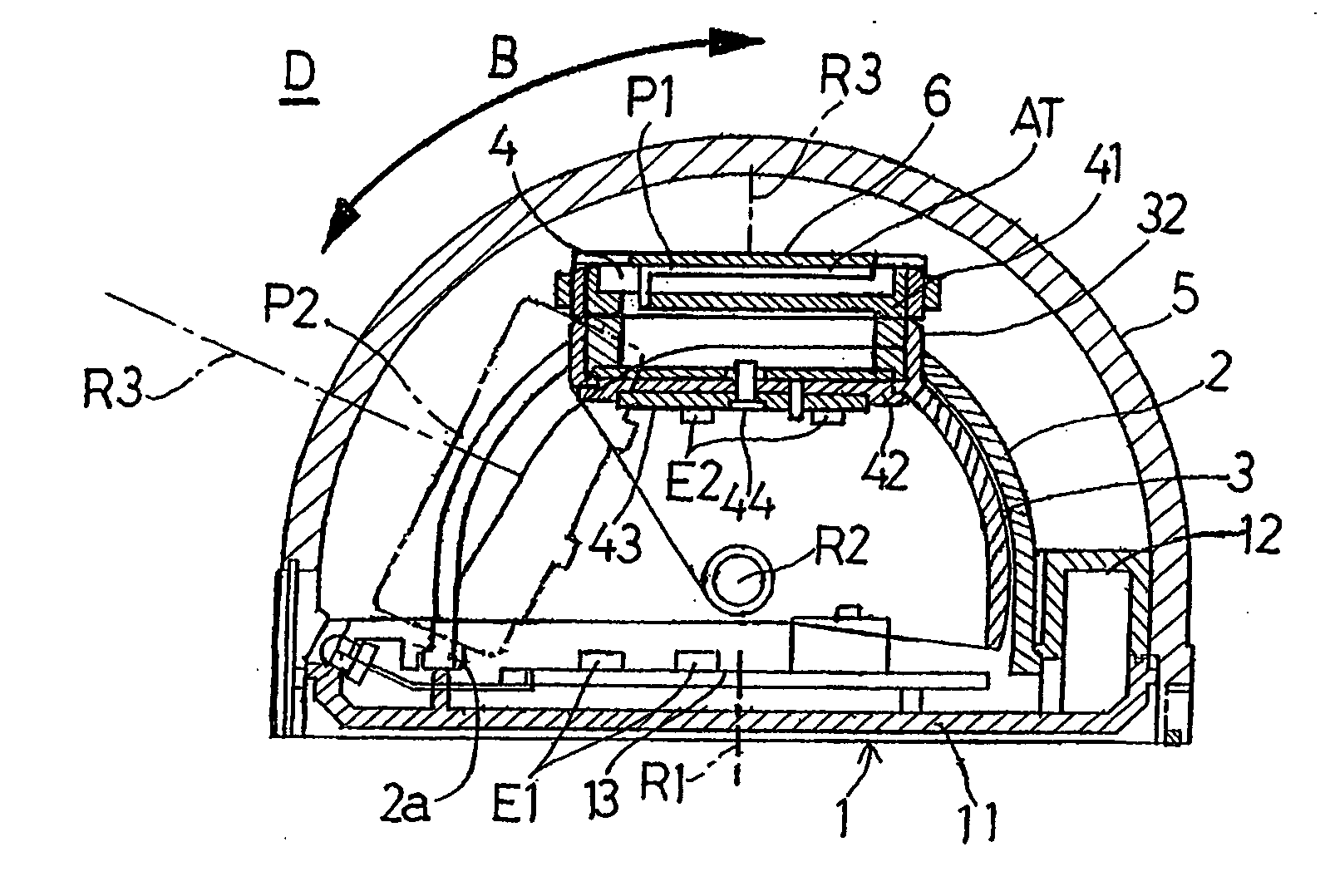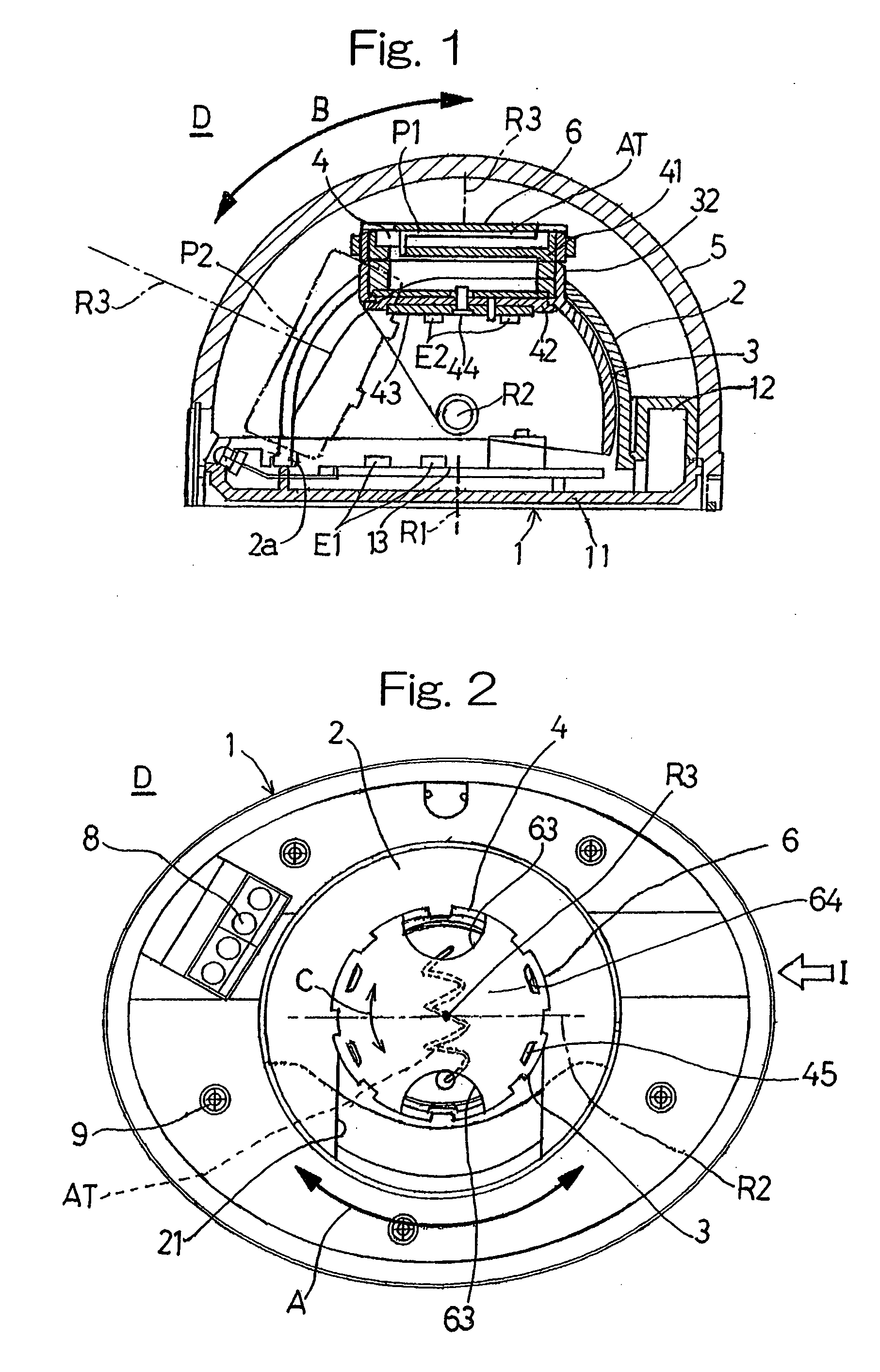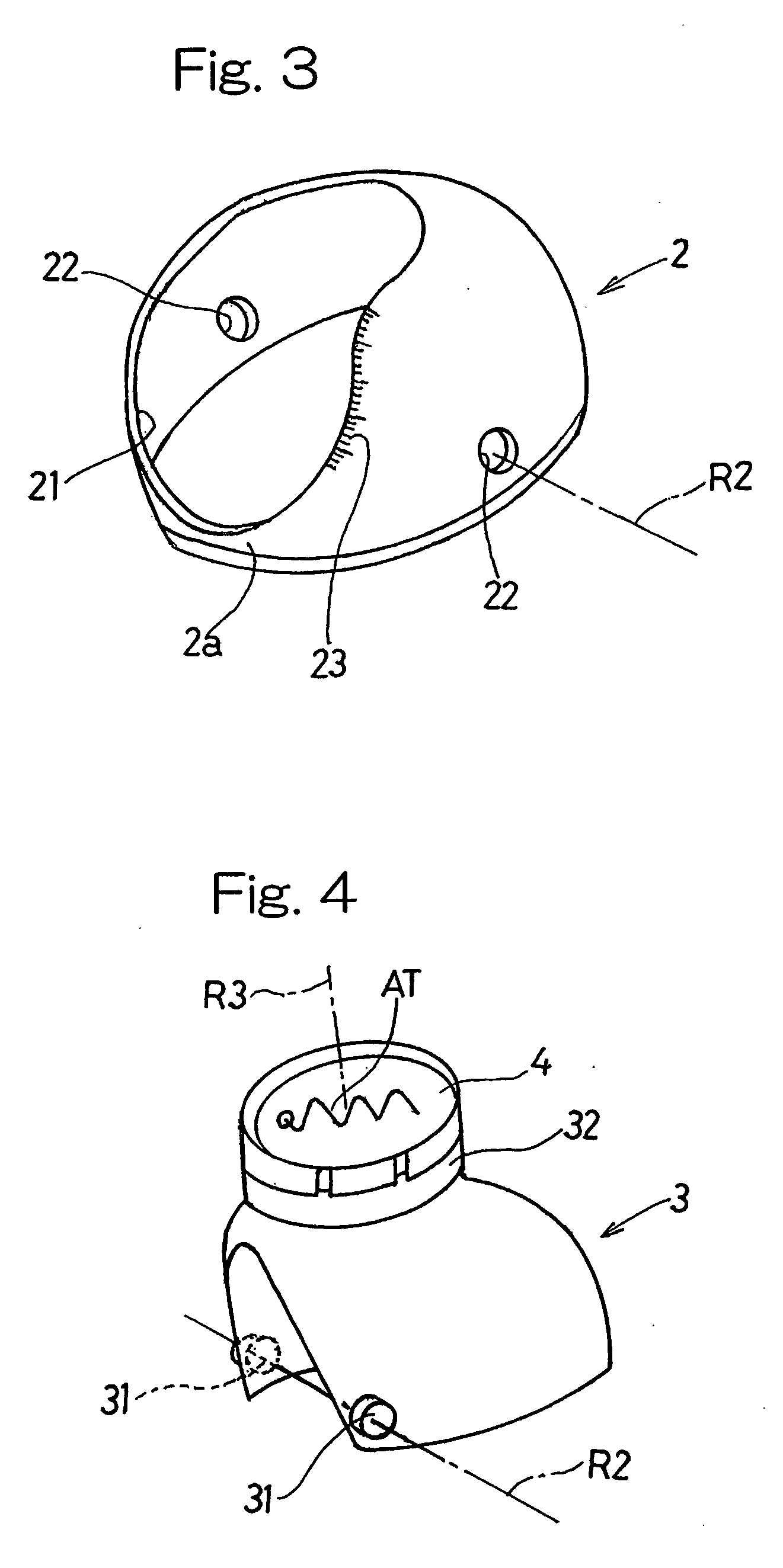Object detection device
a technology of object detection and detection area, which is applied in the direction of antenna details, instruments, antennas, etc., can solve the problems of complex and time-consuming procedures for adjusting the detection area, increasing the size of the object detection device, so as to achieve easy adjustment and easy and quick
- Summary
- Abstract
- Description
- Claims
- Application Information
AI Technical Summary
Benefits of technology
Problems solved by technology
Method used
Image
Examples
Embodiment Construction
[0032] Hereinafter a preferred embodiment of the present invention will be described in detail with reference to the accompanying drawings.
[0033]FIG. 1 illustrates in a transverse sectional representation, an object detecting device according to the preferred embodiment of the present invention as viewed in a direction shown by the arrow I in FIG. 2, while FIG. 2 illustrates a front elevational view of the object detecting device.
[0034] Referring particularly to FIG. 1, the object detecting device generally identified by D and designed in accordance with the present invention includes a support base 1, a first holder 2 (best shown in FIG. 3) supported above the support base 1 for rotation about a first axis R1 lying perpendicular to a bottom surface of the support base 1, a second holder 3 (best shown in FIG. 4) supported under the first holder 2 for rotation about a second axis R2 lying perpendicular to the first axis R1, and an antenna module 4 for holding an antenna AT for tran...
PUM
 Login to View More
Login to View More Abstract
Description
Claims
Application Information
 Login to View More
Login to View More - R&D
- Intellectual Property
- Life Sciences
- Materials
- Tech Scout
- Unparalleled Data Quality
- Higher Quality Content
- 60% Fewer Hallucinations
Browse by: Latest US Patents, China's latest patents, Technical Efficacy Thesaurus, Application Domain, Technology Topic, Popular Technical Reports.
© 2025 PatSnap. All rights reserved.Legal|Privacy policy|Modern Slavery Act Transparency Statement|Sitemap|About US| Contact US: help@patsnap.com



